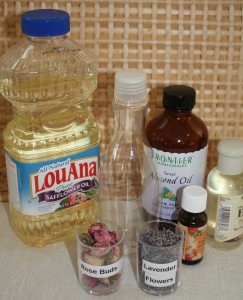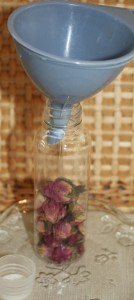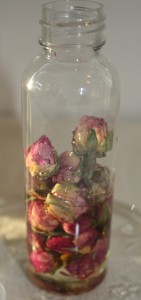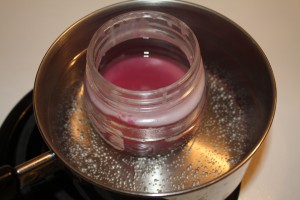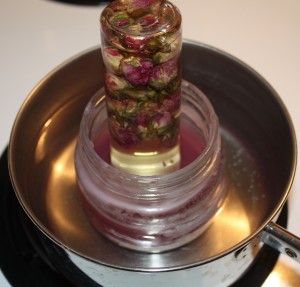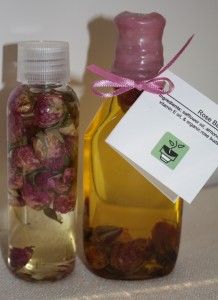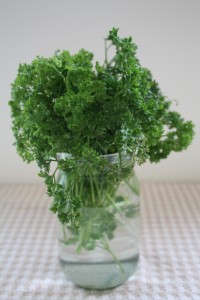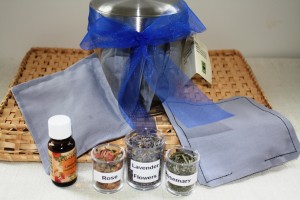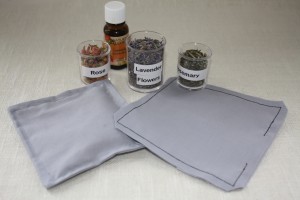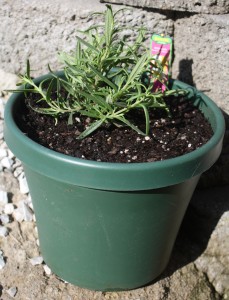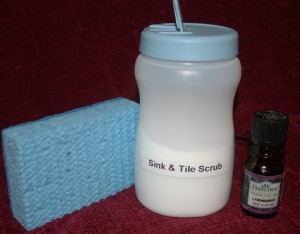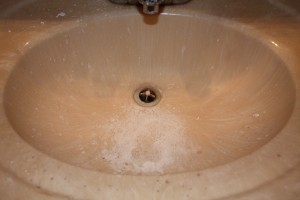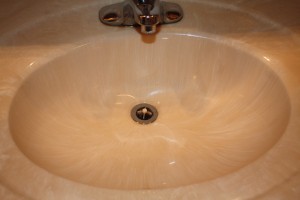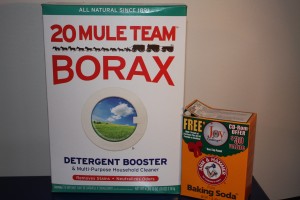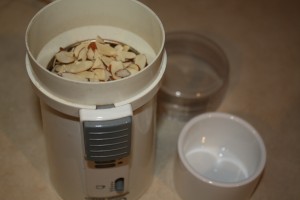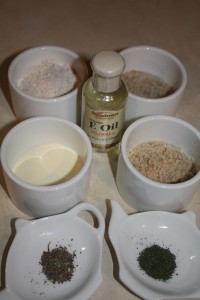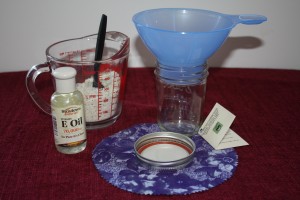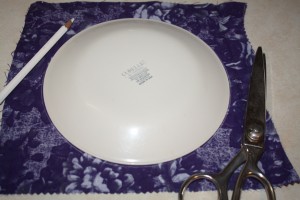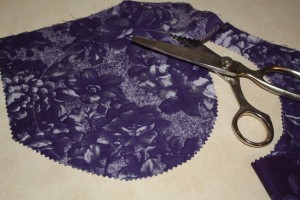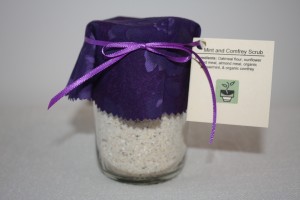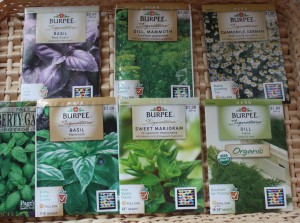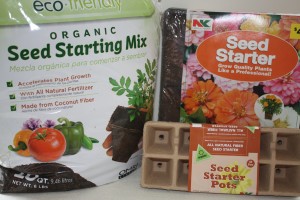These little bottles of homemade bath oil are wonderful for relaxation are easy and fun to make. With just a few ingredients you can have wonderful gifts for your family and friends.
Ingredients:
- Almond oil
- Safflower oil
- Vitamin E oil
- Rose essential oil (optional)
- Dried rose petals
Use a new glass or plastic bottle or a recycle glass bottle. Glass jars should be sterilized in boiling water for 10 minutes and allow to thoroughly dry.
Plastic and glass bottles, perfect for the project can be found at your local hobby store in the cosmetic/soap section. They usually run about $1.00. Just remember what ever size you choose, you have to fill it with oil.
A 16oz. bottle of almond oil runs about $9.00. Safflower oil runs about $4.00 for 24 oz. and a 4 oz. of rose buds runs about $4.00. You will have enough to make several bath oil gifts.
Some other blends for bath oils can be made out of lavender flowers or a mixture of rose and lavender. If you are not allergic to ragweed try chamomile. Other herbs include geranium, jasmine, lemon grass, sage, or rosemary.
Other oils used in homemade bath oil might include:
- Apricot kernel oil
- Sunflower oil
- Grapeseed oil
- Olive oil, it has a fairly strong scent
- Avocado oil
- Wheat germ oil
- Jojoba oil, which never goes rancid
Another gift idea:
A massage oil can be made with a combination of any of these oils and essential oils of your choice. A massage can improve circulation, is good for relaxation, helps relieve stress, tension and in the elimination of waste from the body.
Breakdown of ingredients used in homemade bath oil:
Almond oil is almost orderless oil, very nourishing and slow to become rancid. Vitamin E, is not only good for the skin but will help to preserve the bath oil.
Essential oils are antibacterial as well as adding a wonderful addition to the scent.
The rose buds add scent but also looks great in the bottle. The scent of roses have a calming action to the brain and may help develop a positive mood. Homemade bath oils leaves the skin soft and smooth.
How to make homemade bath oil:
- Pick your bottle, herb’s buds and oils
- Once your bottle is picked, add rose buds to the bottle filling about 1/4 to 1/2 full
- Add vitamin E oil and any essential oils, about 5 drops each depending on size of bottle
- Fill the bottle half way with almond oil or oil of your choice
- Fill the rest of the bottle with safflower oil
- Allow the mixture to set a minute or two to allow the bubbles to come to the top
- Cap
To seal homemade bath oil:
- Place wax with color of your choice in a glass jar in a pan of water, the opening of the jar should have a wide enough mouth to accommodate cap of homemade bath oil
- Do not heat wax directly on the stove, it can catch fire, Always melt wax in a double boiler
- Watch carefully and don’t leave the room, or answer the phone.
- When the wax is melted, dip the capped bottle in the wax and allow the excess to drip back in the glass jar. Dip again several times until the wax has sealed the bottle.
- Allow to cool
- Add a label or tie a card with information on the bottle using ribbon or raffia
- Programs like Publisher will make nice labels, I use the business card size, or hand write a label
- Shake gently before each use.
On the label I add the date, the ingredients list and how to use the oil.
To use the homemade bath oil:
Add about 1 to 2 Tbsp. oil to the bath water while it is running. Be careful when entering or leaving the bath, the oils can cause the tub to be slippery.
Another recipe for homemade bath oil:
Add 1 Tbsp. vegetable glycerin to the bottle, add essential oil of your choice and fill with oil of your choice. For every 1/2 c. oil use about 10 drops of essential oils.
Other things you might include is pure vanilla, small amount of castile soap, dry milk and or honey.
Enjoy your own version of homemade bath oils.

